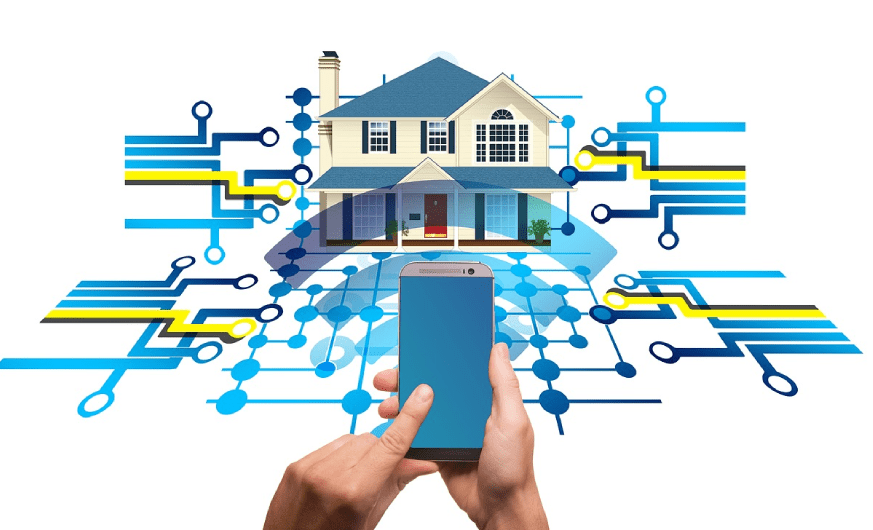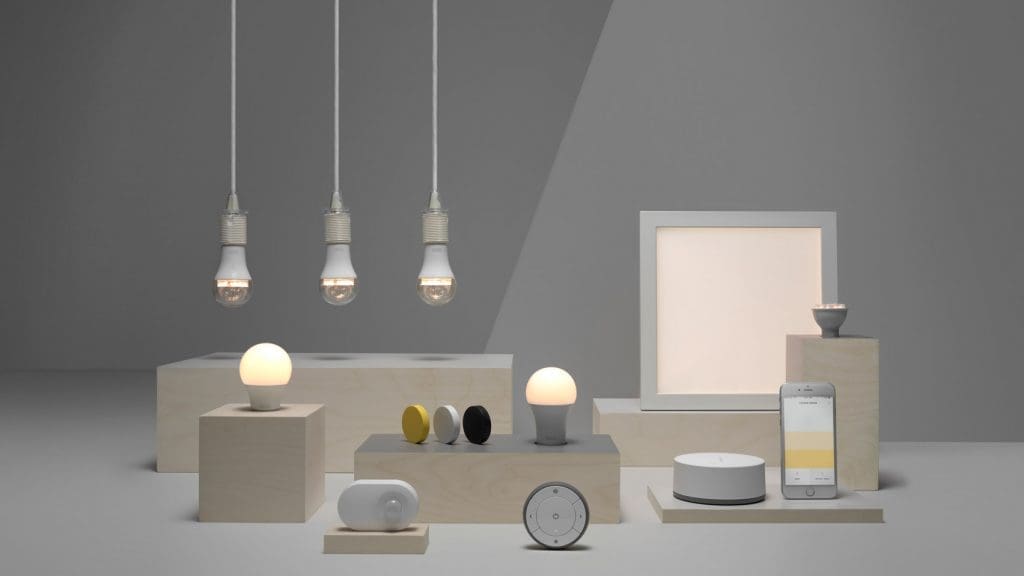
Picture this: you’re walking up your driveway after work. As you approach, the front lights glow on. The air con kicks into action. A soft tune flows from your smart speaker. You tap your phone, the front door unlocks, and you turn the oven on from your kitchen bench — without touching a single button.
This isn’t a movie. It’s a smart home. And getting started is easier and more affordable than you might think.
At Voltora Industries our Brisbane electricians have set up many smart homes across South East Queensland, and today we want to share a bit of what they have learned!
What is a Smart Home?
A smart home is one where everyday devices — lights, locks, appliances, speakers, thermostats, even blinds — are connected to the internet and can be controlled remotely or set to act automatically. These gadgets are often referred to as part of the “Internet of Things” (IoT).
In 2015, Australian homes had an average of nine connected devices. By 2018, that number had almost doubled. Fast forward to today and it’s not unusual for a household to have more than 30. That includes phones, tablets, TVs, cameras, fridges, lights, even doorbells. And with every new device, your home gets a little smarter.
Once upon a time, setting this all up was complicated. Devices used different apps, didn’t work well together, and often supported only one operating system. But now? Most modern smart devices are plug-and-play, work with both Android and iOS, and can be integrated into a central hub — often your smartphone or a smart speaker. All you need is solid network connectivity!
How You Control a Smart Home
There are three main ways to control your smart devices:
1. Apps
Most smart devices come with an app. Thankfully, many brands have streamlined their product lines, so one app often controls multiple devices. Some third-party apps, like Google Home, can connect and control multiple brands from a single dashboard — though sometimes with limited functionality.
The key is finding an ecosystem that suits your needs and sticking with it as much as possible.
2. Smart Assistants
Smart assistants like Google Assistant, Siri (Apple), and Alexa (Amazon) make everything easier. You can use voice commands to control lights, play music, lock doors, or ask questions — all without touching your phone.
You might say, “Hey Google, turn off the lights,” or “Alexa, play some chill music.” As you get more comfortable, you can set up routines. For example, saying “It’s bedtime” might dim the lights, lock the doors, and lower the thermostat.
3. Automation
This is where it gets clever. Smart devices can be programmed to talk to each other. Imagine your alarm going off, and as a result your lights fade up, your coffee machine starts brewing, and your news podcast begins to play.
Apps like IFTTT (If This Then That) help bridge the gap between devices and brands that don’t naturally integrate. It’s a handy way to customise automation without needing a full-scale home automation system.
Smart Speakers: The Brains Behind the Scene
Smart speakers have become the go-to device for anyone wanting to dip their toes into home automation. They act as a hub, linking up and managing your smart devices. Common options include:
- Google Nest with Google Assistant
- Amazon Echo with Alexa
- Apple HomePod with Siri
These assistants don’t just follow orders — they help bring everything together. Want to see who’s at the front door? Just ask your assistant to pull up the feed on your TV. Want the lights to dim while you cook dinner? Easy. Just say the word.
And it’s not just homes. Voice assistants are being built into cars, TVs, and appliances, expanding their usefulness beyond your living room.
What is Home Automation?

In simple terms, home automation uses technology to make everyday tasks more convenient, more efficient, or more accessible.
It’s not one single product or technology. It’s a system of interconnected devices working together. And it’s customisable to suit your lifestyle. Having the right residential electricians on baord at the start will make your autaomtion journey easier!
What Can You Do with Home Automation?
Here are a few practical, everyday ways people use home automation:
Remote Climate Control
Use your phone to warm or cool your house before you get home. Never walk into a freezing kitchen or stuffy lounge again.
Scheduled Events
Set routines so the lights and heater turn on before you wake up, or your living room powers down automatically at bedtime.
Energy Efficiency
Only heat or cool the rooms you use. Turn off devices when they’re not needed. Save money and reduce waste.
Who Uses Smart Home Tech?
Smart homes aren’t just for tech lovers. They’re for everyone. Here’s how different people benefit:
Everyday Homeowners
Want a home that’s easier to manage, more secure, and just… better? Smart devices deliver all that — and then some.
People with Disabilities
Automation can open up new levels of independence.
- Lights, blinds, and thermostats can be voice-controlled or run via phone.
- Visual or hearing impairments can be addressed with voice prompts or alerts.
- Pre-set routines can simplify daily tasks like showering or meal prep.
Carers and Families
Automation helps take the physical burden off carers.
- Smart beds and chairs reduce manual handling.
- CCTV provides peace of mind and easy check-ins.
- Automation improves safety and helps people stay in their own homes longer.
Elderly Australians
Aging doesn’t have to mean losing independence.
- Turn on lights and heating without leaving your chair.
- Use a phone to see who’s at the door.
- Set up systems to remind you when it’s time for medication or appointments.
- Smart locks and voice control reduce reliance on others.
Benefits of Smart Homes
 Entertainment
Entertainment
Smart speakers and streaming devices make it easy to control your music, TV, and even lighting for movie nights.
Smart Appliances
Fridges that track expiry dates. Ovens that preheat on a schedule. Washing machines that ping your phone when the load’s done.
Lighting & Climate
Control brightness, colour, and temperature with a tap or a voice command. Create pre-set “scenes” for different moods or times of day.
Security
Doorbell cameras. Smart locks. Motion-activated lights. Get alerts when someone’s at the door or unlock it remotely for a visitor.
Sustainability
Track your energy and water use. Discover where you’re wasting power. Automate your home to cut usage when you’re not around.
Accessibility
Whether it’s easier access for someone with limited mobility or simplifying life for the whole household, smart homes create flexibility.
What Can You Automate?
Just about anything with an electric current. Here are a few standouts:
- Automatic Lighting: Turn on lights when someone enters a room. Set brightness levels based on time of day.
- Smart Locks: Unlock your door automatically as you approach. Give temporary access codes to visitors or cleaners.
- Security Cameras: Motion alerts with live video on your phone. Always know what’s happening at home.
- Automated Blinds: Adjust based on sunlight and room temperature.
- Heating and Cooling: Pre-set routines based on time or activity. Turn off when a room’s not in use.
DIY vs Fully Integrated Systems
DIY smart home setups using off-the-shelf products are a great starting point. Think smart bulbs, speakers, plugs, and sensors. But they can be limited when it comes to compatibility, scalability, and long-term flexibility.
If you want to scale your system or rely on automation for accessibility or elderly care, it’s worth planning a full smart home solution from the start — ideally with help from professionals who understand the technology and how it all fits together.
Choosing Your Home Automation Products
Here’s a basic breakdown of common goals and the devices that go with them:
| Solution | Product 1 | Product 2 | Product 3 |
| Entertainment | Home theatre and TV | Multi-room music | Streaming services |
| Communications | Super-fast internet | Wi-Fi | Content streaming |
| Climate control | Heating | Cooling | Curtain control |
| Lighting | Custom ambience | Central control | Lighting automation |
| Security | CCTV cameras | Alarms | Intercom |
How Much Does It Cost?
Smart homes can be as simple or as high-tech as you like:
- Basic Setup ($100–$200): Smart speaker and a couple of smart switches or bulbs.
- Mid-Range ($500–$1,000): More devices, routines, and app-controlled setups.
- Advanced ($5,000+): Whole-home systems, voice routines, integration across rooms and devices, and tailored experiences.
Going high-end often means buying compatible products from the start — but the investment pays off in convenience, efficiency, and comfort.
Is It Difficult to Set Up?
Not really. Most devices come with clear instructions and apps that walk you through the setup. You’ll need:
- A reliable Wi-Fi network.
- A smartphone or tablet.
- Optional: a smart speaker or hub.
The most common hiccup is getting devices from different brands to work together. That’s where advice from a home automation expert can help — they’ll make sure your system is streamlined from the beginning.
Why Choose Voltora Industries?
At Voltora Industries, we help you do more than just plug things in. We design tailored smart home solutions to suit your lifestyle, your budget, and your future plans.
Whether you’re dipping your toe into home automation or want a fully connected household, we’re here to guide you through the options and get it done right.
Get in touch here and chat with our smart home experts. Let’s create a home that works harder — and smarter — for you.
Lets get started


 Entertainment
Entertainment

